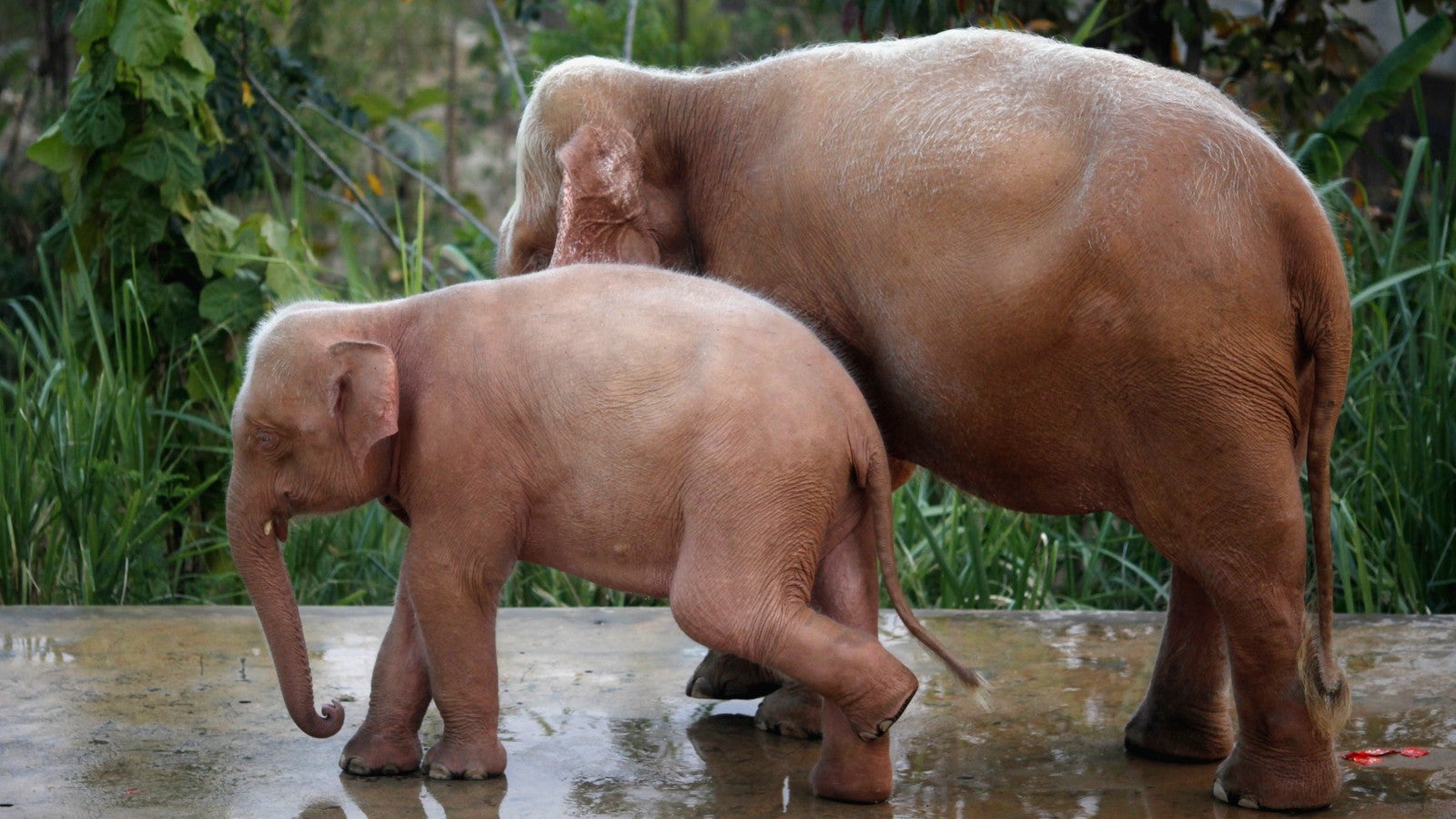What’s so special about a white elephant?
The expression “white elephant” refers to a gift, typically cumbersome and large in size, that is difficult to dispose of and exorbitantly expensive to maintain. Like, say, something that eats 200 to 600 pounds of food in a single day. Legend holds that the king of Siam would bestow white elephants upon his wilier courtiers, in hopes that the high cost of handling would bankrupt them—inspiring the modern Christmas party-game of “White Elephant,” or “Yankee Swap.”


The expression “white elephant” refers to a gift, typically cumbersome and large in size, that is difficult to dispose of and exorbitantly expensive to maintain. Like, say, something that eats 200 to 600 pounds of food in a single day. Legend holds that the king of Siam would bestow white elephants upon his wilier courtiers, in hopes that the high cost of handling would bankrupt them—inspiring the modern Christmas party-game of “White Elephant,” or “Yankee Swap.”
In old Siam, it would have been the grossest of discourtesies to decline such a gift. The white elephant—which was more often than not stricken with albinism, and thus more a ruddy-pink color—was, and remains to this day, a symbol of success. To possess a white elephant connoted political power, wealth and prosperity, great wisdom, and the love of one’s people.
If a member of the king’s court had somehow landed on his majesty’s bad side, and lacked the funds to properly care for such a beast, the status afforded by ownership was nonetheless too great to refuse. To reject a gift of a white elephant would have been illogical if you valued your reputation. And your head.
A real white elephant made headlines on Sunday, Mar. 1, when officials in Myanmar announced that a seven-year-old female had been captured in the jungles of the western Ayeyarwaddy region. As it turns out, the mystique of the white elephant has penetrated the ethos of even one of the world’s most entrenched authoritarian regimes.
“Previous white elephants transported from Myanmar’s jungles have been heralded with lavish ceremonies,” reports The Daily Mail. “Military leaders sprinkle them with scented water laced with gold, silver, and precious gems.”
Apparently, the white-elephant narrative transcends Southeast Asia’s vast political gradient; from Myanmar’s military autocracy, to the monarchies of Thailand and Cambodia, to the fading communism of Vietnam, white elephants are generally perceived as not just symbols, but working charms that promote national wellbeing and stability.
The more white elephants a government has on hand, the more docile its people, the logic goes; another specimen, captured in 2011, was hailed by the junta as a “symbol of peace.” Accordingly, nine white elephants reside at Myanmar’s two major zoos (seven in the capital, Naypiydaw, and two in the largest city, Yangon). These animals enjoy pampered lifestyles far above that of the average Myanmarese citizen. But ironically enough, the beasts have been just as much a cause for political unrest as periods of peace.
Though historians still debate the actual inciting factors, some say the Burmese-Siamese War of 1563 broke out when King Maha Chakkraphat (ruler of the Ayutthaya Kingdom in modern-day Thailand) refused to bequeath several of his own white elephants to the king of Burma (now Myanmar). The resulting invasion became known as “the War of the White Elephant,” ending a year later with significant casualties and loss of land for the Ayutthayans.
Despite the humiliation, modern day Thais—particularly political elites—still maintain the necessity of white elephants to the survival of the state. As with swans in the United Kingdom and Commonwealth realms, white elephants are the sole property of the monarch; six males and four females currently reside at various Thai Elephant Conservation Centers (TECC), under royal patronage, around the country. They are not allowed to breed, and are generally wild-caught.
To call them merely “white elephants” (“chang phueak”) is politically incorrect. The proper term is “chang samkhan,” according to the TECC, meaning “auspicious elephant,” and “whiteness” alone does not an auspicious elephant make. “Only palace experts can determine what qualifies as an auspicious elephant, and then assign it a rank,” TECC literature insists. “Using ancient and arcane rules, experts classify auspicious elephants into one of four families—each family having its home in a mythological forest in the Himalayas—and then, using seven basic criteria, assign them hierarchical ranks…Even to elephant experts they look very much like normal, gray elephants.”
The Thai royal family’s obsession with chang samkhan is easy to criticize. Upkeep is, as it ever was, enormously expensive; and offensively wasteful in a country where, despite massive growth in recent years, poverty and slum-ification abound—there are as many as 100,000 people per kilometer living in Klong Toey, Bangkok’s most notorious slum. Moreover, the elephants in question are plucked from the wild—an undoubtedly traumatic experience for such an emotionally intelligent species, and certainly an ethical violation that rankles animal-rights advocates the world over.
But it’s equally easy to understand why the tradition has survived so long. The ruling Chakri dynasty has ruled Thailand since the late 18th century, staving off European colonization in the late 19th and Japanese occupation in World War II; all the while sidestepping too many coup d’états to count on two hands. Though white elephants have done little to maintain much in the way of widespread political order in this part of the world, something auspicious is certainly at work—at least where the Thai royals are concerned. Perhaps the junta in Myanmar is taking notes.